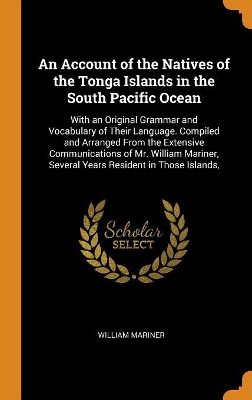Cambridge Library Collection - History of Oceania
2 primary works • 4 total works
Volume 1
An Account of the Natives of the Tonga Islands, in the South Pacific Ocean: Volume 1
by William Mariner
Published 15 November 2012
In November 1806, the damaged Port-au-Prince arrived at what Captain Cook had called the Friendly Islands. William Charles Mariner (1791–1853) was among the few crew members spared by the native inhabitants. He lived there for four years. Published in 1818, this two-volume second edition offers an important early insight into Tongan customs and language. As editor John Martin (1789–1869) explains, the structure of a nation's language is vital to the consideration of its history. So successful was the first edition of 1817 - expanded upon here to include 'generally corroborative, and in a few instances somewhat corrective' information from another erstwhile inhabitant - that within months of its publication a French translation appeared; German and American editions soon followed. Volume 1 comprises Martin's extensive introduction, the story of the ship's voyage and destruction, and an account of Mariner's stay on the islands and the events leading to his departure.
Volume 2
An Account of the Natives of the Tonga Islands in the South Pacific Ocean
by William Mariner
Published 6 January 2010
In November 1806, the damaged Port-au-Prince arrived at what Captain Cook had called the Friendly Islands. William Charles Mariner (1791-1853) was among the few crew members spared by the native inhabitants. He lived there for four years. Published in 1818, this two-volume second edition offers an important early insight into Tongan customs and language. As editor John Martin (1789-1869) explains, the structure of a nation's language is vital to the consideration of its history. So successful was the first edition of 1817 - expanded upon here to include 'generally corroborative, and in a few instances somewhat corrective' information from another erstwhile inhabitant - that within months of its publication a French translation appeared; German and American editions soon followed. Volume 2 covers diverse aspects of Tongan society, from its music to notions of the soul, and includes a detailed grammar of the language and 2,000 words of vocabulary.
An Account of the Natives of the Tonga Islands, in the South Pacific Ocean 2 Volume Set
by William Mariner
Published 15 November 2012
In November 1806, the damaged Port-au-Prince arrived at what Captain Cook had called the Friendly Islands. William Charles Mariner (1791-1853) was among the few crew members spared by the native inhabitants. He lived there for four years. Published in 1818, this two-volume second edition offers an important early insight into Tongan customs and language. As editor John Martin (1789-1869) explains, the structure of a nation's language is vital to the consideration of its history. So successful was the first edition of 1817 - expanded upon here to include 'generally corroborative, and in a few instances somewhat corrective' information from another erstwhile inhabitant - that within months of its publication a French translation appeared; German and American editions soon followed. Volume 1 comprises Martin's extensive introduction and a narrative of Mariner's stay. Volume 2 covers diverse aspects of Tongan society and includes a detailed grammar of the language and 2,000 words of vocabulary.
An Account of the Natives of the Tonga Islands, in the South Pacific Ocean: Volume 2
by William Mariner
Published 5 December 2015
In November 1806, the damaged Port-au-Prince arrived at what Captain Cook had called the Friendly Islands. William Charles Mariner (1791–1853) was among the few crew members spared by the native inhabitants. He lived there for four years. Published in 1818, this two-volume second edition offers an important early insight into Tongan customs and language. As editor John Martin (1789–1869) explains, the structure of a nation's language is vital to the consideration of its history. So successful was the first edition of 1817 - expanded upon here to include 'generally corroborative, and in a few instances somewhat corrective' information from another erstwhile inhabitant - that within months of its publication a French translation appeared; German and American editions soon followed. Volume 2 covers diverse aspects of Tongan society, from its music to notions of the soul, and includes a detailed grammar of the language and 2,000 words of vocabulary.


